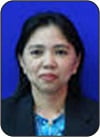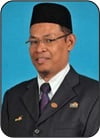Teaching Thinking Skills in Teacher Education
Abstract
ABSTRACT: The thinking skills policy in Malaysia is motivated by the aspiration of the 2020 Vision that was published in 1991. The vision states explicitly that Malaysia will become a fully developed nation by the year 2020. So, teaching the thinking skills has also been given a high priority in educational policy. However, many teachers are ill-equipped with the ability to teach thinking skills. Therefore, as the producer of current and future teacher, teacher education programme should emphasize thinking skills teaching. This study aimed at identifying the extent to which teacher educators provide an exemplary practice of thinking skills teaching to student teachers. Specifically, this study investigates whether teacher educators provide the opportunity to student teachers to engage in teaching and learning that emphasized the integration of thinking skills. This study was conducted at one teacher education programme in Malaysia. All final year student teacher (60) were selected as the samples. A set of questionnaire used as an instrument. Data were analyzed using Statistical Package for the Social Science and the findings were reported in the form of frequency and percentage. The findings indicate the lack integration of various forms of thinking skills in teaching and learning activities. The traditional approach of a one-way communication technique was more dominant compare to the teaching technique that promotes thinking skills. Hence, this study has several practical implications for teacher education programme for producing future teachers with the ability to implement thinking skills policy in schools.
KEY WORDS: Thinking skills, educational policy, teacher education, teacher educator, student-teacher, teaching and learning activities, and ability to implement thinking skills policy.



About the Authors: Christina Andin @ Nur Qistina, Abdul Said Ambotang and Musirin Mosin are the Lecturers at the Faculty of Psychology and Education UMS (Malaysia University of Sabah), 88400 Kota Kinabalu, Sabah, Malaysia. For academic interests, the authors can be contacted via their e-mails at: christina@ums.edu.my, said@ums.edu.my, and m_musirin@yahoo.com
How to cite this article? Nur Qistina, Christina Andin @, Abdul Said Ambotang & Musirin Mosin. (2015). “Teaching Thinking Skills in Teacher Education” in EDUCARE: International Journal for Educational Studies, Vol.8(1) August, pp.31-44. Bandung, Indonesia: Minda Masagi Press and UMP Purwokerto, ISSN 1979-7877.
Chronicle of the article: Accepted (May 14, 2015); Revised (June 29, 2015); and Published (August 25, 2015).
Full Text:
PDFReferences
Baharun, Kartini. (1998). “Critical Thinking Skills, Dispositions, and Classroom Practices of History Teachers in Malaysian Secondary Schools”. Unpublished Ph.D. Dissertation. UK [United Kingdom]: University of Manchester.
Bailin, S. (1998). “Education, Knowledge, and Critical Thinking” in D. Carr [ed]. Education, Knowledge, and Truth. London: Routledge, pp.204-221.
Beresford, B. & P. Sloper. (2008). Understanding the Dynamics of Decision-Making and Choice: A Scoping Study of Key Psychological Theories to Inform the Design and Analysis of the Panel Study. New York: Social Policy Research Unit, University of York.
Beyer, B.K. (1987). Practical Strategies for Teaching of Thinking. Boston, MA: Allyn & Bacon Inc.
Binkley, M. et al. (2010). “Draft White Paper 1: Defining 21st Century Skills”. Available online also at: http://cms.education.gov.il/NR/rdonlyres/19B97225-84B1-4259-B423-4698E1E8171A/115804/defining21stcenturyskills.pdf [accessed in Kota Kinabalu, Malaysia: April 15, 2015].
Blume, R. (1971). “Humanizing Teacher Education” in PHI Delta Kappan, 53, pp.411-415.
Bransford, J.D. & B.S. Steain. (1986). The Ideal Problem Solver: A Guide for Improving Thinking, Learning, and Creativity. New York: W.H. Freeman.
Brophy, J. (1998). Motivating Students to Learn. USA [United States of America]: McGraw Hill Company.
Bruner, J.S. (1986). Actual Minds, Possible Worlds. Cambridge, MA: Harvard University Press.
Caine, R.N. & G. Caine. (1995). “Reinventing Schools Through Brain-Based Learning” in Educational Leaderhip, 52, pp.43-47.
Cassidy, W. & D.G. Kurfman. (1977). “Decision Making as Purpose and Process” in D.G. Kurfman [ed]. Developing Decision-Making Skills. Virginia: NCSS, 47th Yearbook.
Cattell, R.B. & H.J. Butcher. (1968). The Prediction of Achievement and Creativity. Indianapolis: Bobbs-Merrill.
CDC [Curriculum Development Centre]. (2002). Kemahiran Berfikir dalam Pengajaran dan Pembelajaran (Thinking Skills in Teaching and Learning). Kuala Lumpur, Malaysia: MoE [Ministry of Education] Malaysia.
Craft, A. (2007). “Possibility Thinking in the Early Years and Primary Classroom” in A.G. Tan [ed]. Creativity: A Handbook for Teachers. Singapore: World Scientific.
Csikszentmihalyi, M. (1999). “Implications of a Systems Perspective for the Study of Creativity” in R.J. Sternberg [ed]. Handbook of Creativity. Cambridge, UK: Cambridge University Press, pp.313-335.
Collin, R. (2014). “Skills for the 21st Century: Teaching High-Order Thinking” in Curriculum and Leadership Journal, Volume 12, Issue 14. Available online also at: http://www.curriculum.edu.au/leader/teaching_high_order_thinking.37431.html?issueID=12910 [accessed in Kota Kinabalu, Malaysia: April 15, 2015].
Comfort, L.K. & C. Wukich. (2013). “Developing Decision-Making Skills for Uncertain Conditions: The Challenge of Educating Effective Emergency Managers” in Journal of Public Affairs Education, 19(1), pp.53-72.
Comfort, L.K. (2007). “Crisis Management in Hindsight: Cognition, Communication, Coordination, and Control” in Public Administration Review, 67(1), pp.189-197.
Costa, A. (2001). “Teaching for, of, and about Thinking” in A. Costa [ed]. Developing Minds: A Resource Book for Teaching Thinking. Victoria, Australia: Hawker Brownlow Education, pp.354-358.
Cotton, K. (1991). “Teaching Thinking Skills” in School Improvement Research Series. Available online also at: http://www.nwrel.org/scpd/sirs/6/cu11ktml [accessed in Johor, Malaysia: December 20, 2014].
Cropley, D.H. & A.J. Cropley. (2005). “Engineering Creativity: A Systems Concept of Functional Creativity” in J.C. Kaufman & J. Baer [eds]. Faces of the Muse: How People Think, Work, and Act Creatively in Diverse Domains. Hillsdale, NJ: Lawrence Erlbaum, pp.169-185.
Cuban, L. (1984). How Teacher Taught: Constancy and Change in American Classrooms (1890-1980). New York: Longman.
Darling-Hammond, L. et al. (2005). “Educational Goals and Purposes: Developing a Curricular Vision for Teaching” in L. Darling-Hammond & J. Bransford [eds]. Preparing Teachers for Changing World. USA [United States of America]: Jossey-Bass.
De Bono, Edward. (1991). Teaching Thinking. London: Penguin Books.
Dillon, J.T. (1984). “Research on Questioning and Discussion” in Educational Leadership, 42(3), pp.50-56.
Dineen, R., E. Samuel & K. Livesey. (2005). “The Promotion of Creativity in Learners: Theory and Practice” in Art, Design & Communication in Higher Education, 4(3).
Ehrenberg, S.D., L.M. Ehrenberg & D. Durfee. (1979). Basics Teaching: Learning Strategies. Miami Beach, F.L.: Institute of Curriculum and Instruction.
Facione, P.A. (1990). Critical Thinking: A Statement of Expert Consensus for Purposes of Educational Assessment and Instruction. Millbrae, CA: The California Academic Press.
Facione, P. (2010). “Critical Thinking: What it is and Why it Counts”. Available online also at: http://www.insightassessment.com/dex.htm [accessed in Kota Kinabalu, Malaysia: April 15, 2015].
Feuerstein, R., M.B. Hoffman & R. Miller. (1980). Instrumental Enrichment: An Intervention for Cognitive Modifiability. Baltimore, MD: University Park Press.
Finke, R.A., T.B. Ward & S.M. Smith. (1992). Creative Cognition: Theory, Research, and Applications. Cambridge, MA: MIT Press.
Gagne, R. (1985). The Condition of Learning. New York: Holt, Rinehart & Winston, 3rd edition.
Gall, M. (1984). “Synthesis of Research on Teacher Questioning” in Educational Leadership, 42(3), pp.40-46.
Gick, M.L. (1986). “Problem Solving Strategies” in Educational Psychologists, 21(12), pp.99-120.
Greenbank, P. (2010). “Developing Decision-Making Skills in Student: An Active Learning Approach”. Available online also at: http://www.edgehill.ac.uk/clt/files/2012/02/Developing-decision-making-skills-in-students1.pdf [accessed in Kota Kinabalu, Malaysia: April 15, 2015].
Griffin, G.A. (1999). “Changes in Teacher Education: Looking to the Future” in G.A. Griffin [ed]. The Education of Teacher. Chicago: The University of Chicago Press, pp.1-17.
Guilfoyle, K., M.L. Hamilton & S. Pinnegar. (1997). “Becoming Teachers of Teachers: The Paths of Four Beginners” in T. Russell & F. Korthagen [eds]. Teachers Who Teach Teachers. London and Washington, DC: Falmer Press, pp.35-55.
Halpern, D.F. (1984). Thought and Knowledge: An Introduction to Critical Thinking. Hillsdale, N.J.: Erlbaum.
Hoban, G. (2005). “Developing a Multilink Conceptual Framework” in G. Hoban [ed]. The Missing Link in Teacher Education Design. Netherland: Springer.
Hokaday, F. (1984). “Collaborative Learning with Young Children” in Educational Studies, 10(3), pp.237-242.
Johnson, D. & R. Johnson. (1982). “Maximising Achievement and Cognitive-Social Development and Socialisation Through Cooperative Learning”. Paper presented at the 90th Annual Convention of the American Psychological Association, on August 23-27.
Klieme, E. (2004). “Assessment of Cross‐Curricular Problem‐Solving Competencies” in H. Moskowitz & M. Stephens [eds]. Comparing Learning Outcomes: International Assessments and Education Policy. London: Routledge Falmer, pp.81-107.
Korthagen, F.A.J., J. Loughran & M. Lunenberg. (2005). “Teaching Teachers: Studies into the Expertise of Teacher Educators” in Teaching and Teacher Education, 21(2), pp.107-115.
Krathwohl, D.R. (2002). “A Revision of Bloom's Taxonomy: An Overview” in Theory into Practice, 41(4), pp.212-218.
Leat, D. (1998). Thinking Through Geography. Cambridge: Chris Kington Publishing.
Lewis, A. & D. Smith. (1993). “Defining Higher Order Thinking” in Theory into Practice, 32(3), pp.131-137.
Lieberman, A. & D.R. Wood. (2003). Inside the National Writing Project. New York: Teachers College Press.
Limbach, B. & W. Waugh. (2010). “Developing Higher Level Thinking” in Journal of Instructional Pedagogies, Vol.3. Journal Published by the Academic & Business Research Institute.
Lipman, M. (1985). “Thinking Skills Fostered by Philosophy for Children” in S.F. Segal, M. Chipman & R. Glaser [eds]. Thinking and Learning Skills, Vol.1. Hillsdale, New Jersey: Lawrence Etrlbaum, pp.83-108.
Lunenberg, M. & F. Korthagen. (2003). “Teacher Educators and Student-Directed Learning” in Teaching and Teacher Education, 19(1), pp.29-44.
Martin, D.S. (1983). “A Critical New Role in Teacher Education”. Paper presented at the Annual Meeting of the America Association of College for Teacher Education, Detriot, MI, on February.
Marzano, R.J. et al. (2000). Dimension of Thinking: A Framework for Curriculum and Instruction. United State Department of Education: Semline.
Mayer, R.E. (1990). Thinking, Problem Solving, Cognition. New York: W.H. Freeman and Company, 2nd edition.
Mayer, R.E. & M.C. Wittrock. (2006). “Problem Solving” in P.A. Alexander & P. Winne [eds]. Handbook of Educational Psychology. Mahwah, NJ: Associates H. Lawrence, 2nd edition.
Mohamad, Mahathir. (1991). Malaysia: The Way Forward. Kuala Lumpur, Malaysia: Center for Economic Research and Service, Malaysian Business Council.
Newell, A. & H.A. Simon. (1972). Human Problem Solving. Englewood Clif, N.J.: Prentice-Hall.
Nickerson, R.S, D.N. Perkins & E.E. Smith. (1985). The Teaching of Thinking. New Jersey: Lawrence Erlbaum Associates.
OECD [Organization for Economic Cooperation and Development]. (2010). “PISA 2012: Field Trial Problem Solving Framework”. Available online also at: http://www.oecd.org/pisa/pisaproducts/46962005.pdf [accessed in Kota Kinabalu: September 16, 2014].
OECD [Organization for Economic Cooperation and Development]. (2012). “Better Skills, Better Jobs, Better Lives: A Strategic Approach to Skills Policies” in OECD Publishing. Available online also at: http://dx.doi.org/10.1787/9789264177338-en [accessed in Kota Kinabalu, Malaysia: April 15, 2015].
Palinscar, A.S. & A.L. Brown. (1989). “Instruction for Self-Regulated Reading” in L.B. Resnick & L.E. Klopfer [eds]. Toward the Thinking Curriculum: Current Cognitive Research. New York: Association for Supervision and Curriculum Development, pp.19-39.
Parker, W.C. & D. Hess. (2001). “Teaching with and for Discussion” in Teaching and Teacher Education, 17(3), pp.273-289.
Paul, R.W., L. Elder & T. Bartell. (1997). “Teacher of Teacher: Examining Preparation for Critical Thinking”. Paper presented at the Annual Meeting of the America Educational Research Association.
Paul, R. & L. Elder. (2008). “The Nature and Function of Critical and Creative Thinking”. Available online also at: http://www.criticalthinking.org/files/CCThink_6.12.08.pdf [accessed in Kota Kinabalu, Malaysia: April 15, 2015].
Pithers, R.T. (2000). “Critical Thinking in Education: A Review” in Educational Research, 42(3), pp.237-249.
Polya, G. (1957). How to Solve it. New York: Princeton University Press, 2nd edition.
Presseisen, B.Z. (1986). “Critical Thinking and Thinking Skills: State of the Arts Definitions and Practice in Public Schools”. Paper presented at the Annual Meeting of the American Educational Research Association in San Francisco, CA.
Rahil, M. et al. (2004). “The Incorporation of Thinking Skills in the School Curriculum” in Kajian Malaysia, Jld.XXII(2), December.
Rajendran, N. (1998). “Teaching High-Order Thinking Skills in Language Classrooms: The Need for Transformation of Teaching Practice”. Unpublished Doctoral Dissertation. East Langsing, MI, USA [United States of America]: Michigan State University.
Resnick, L.B. (1987). Education and Learning to Think. Washington, D.C.: National Academy Press.
Rosenshine, B. & C. Meister. (1992). “The Use of Scaffolds for Teaching Higher-Level Cognitive Strategies” in Educational Leadership, 49(7), pp.26-33.
Rosnani, H. & H. Suhailah. (2003). The Teaching of Thinking in Malaysia. Kuala Lumpur: IIUM [International Islamic University of Malaysia] Press.
Ruggiero, V.R. (1994). “Thinking Instruction in the 21st Century” in Vital Speeches of the Day, 60(2), pp.68-79.
Russell, T. (1997). “Teaching Teachers: How I Teach IS the Message” in J. Lourgharn & T. Russell [eds]. Teaching about Teaching: Purpose, Passion, and Pedagogy in Teacher Education. London and Washington DC: The Palmer Press.
Russell, T. (2005). “Using Practicum in Preservice Teacher Education Programs: Strength and Weaknesses of Alternative Assumption about the Experiences of Learning to Teach” in G.F. Hoban [ed]. The Missing Link in Teacher Education Design. Netherland: Springer.
Schuable, L. & R. Glaser. (1990). “Scientific Thinking in Children and Adults” in D. Kuhn [ed]. Developmental Perspectives on Teaching and Learning Thinking Skills: Contributions to Human Development. New York: Free Press, pp.9-26.
Siegal, M.G. (1984). “A Constructivist Perspective for Teaching Thinking” in Educational Leadership, 42(3), pp.18-22.
Simon, R.J., J. van der Linden & T.M. Duffy. (2000). New Learning. The Netherlands: Kluwer.
Skinner, B.F. (1953). Science and Human Behavior. New York: MacMillan.
Slavin, R.E. (1981). “Synthesis of Research on Cooperative Learning” in Educational Leadership, 38(8), pp.655-660.
Stromquist, N.P. (2002). Education in a Globalised World: The Connectivity of Economic Power, Technology, and Knowledge. Lanham, MD: Rowman & Littlefield.
Swartz, R. & S. Parks. (1994). Infusing Critical and Creative Thinking into Content Instruction. California: Critical Thinking Press.
EDUCARE: International Journal for Educational Studies. Ciptaan disebarluaskan di bawah Lisensi Creative Commons Atribusi-BerbagiSerupa 4.0 Internasional
